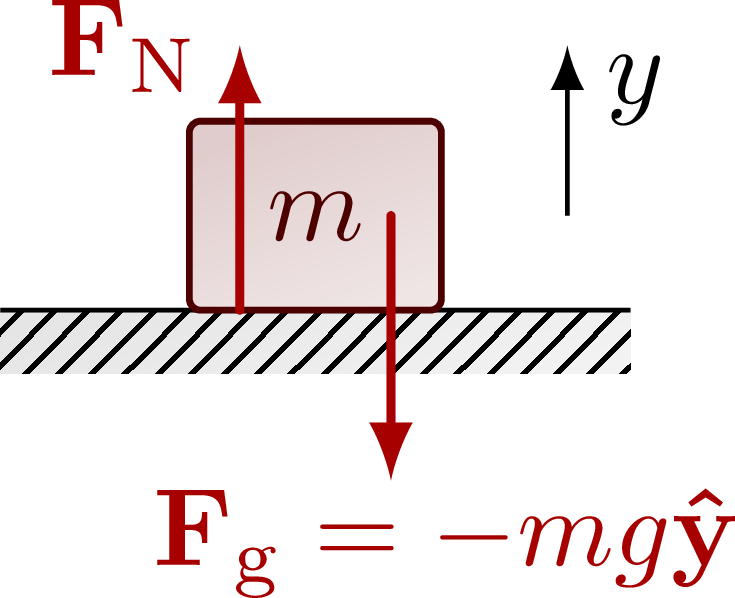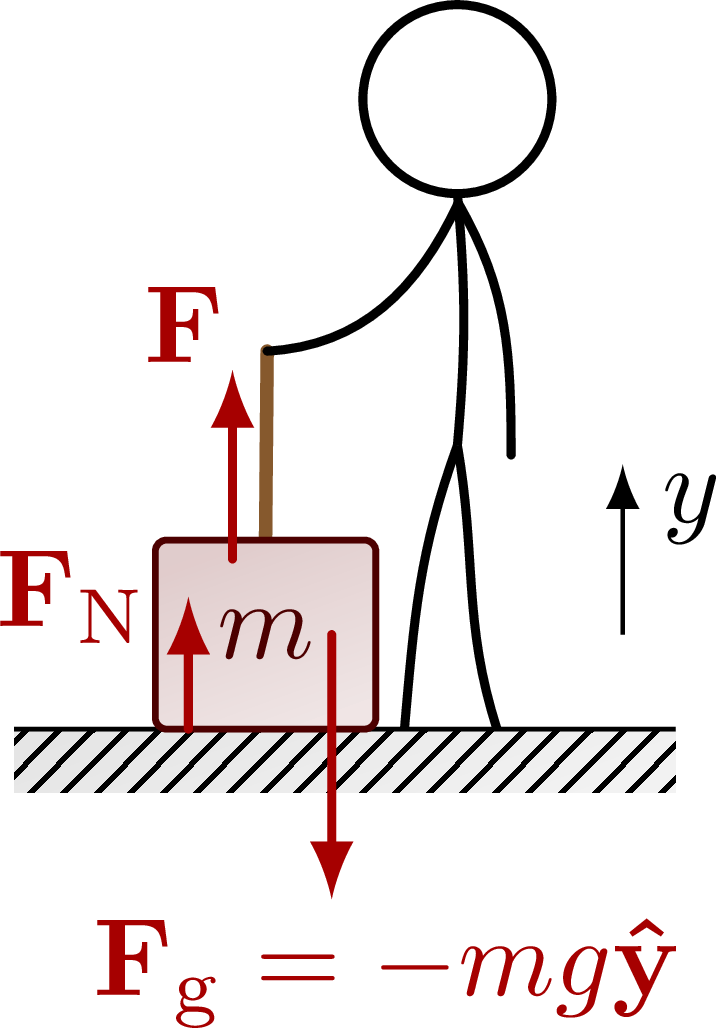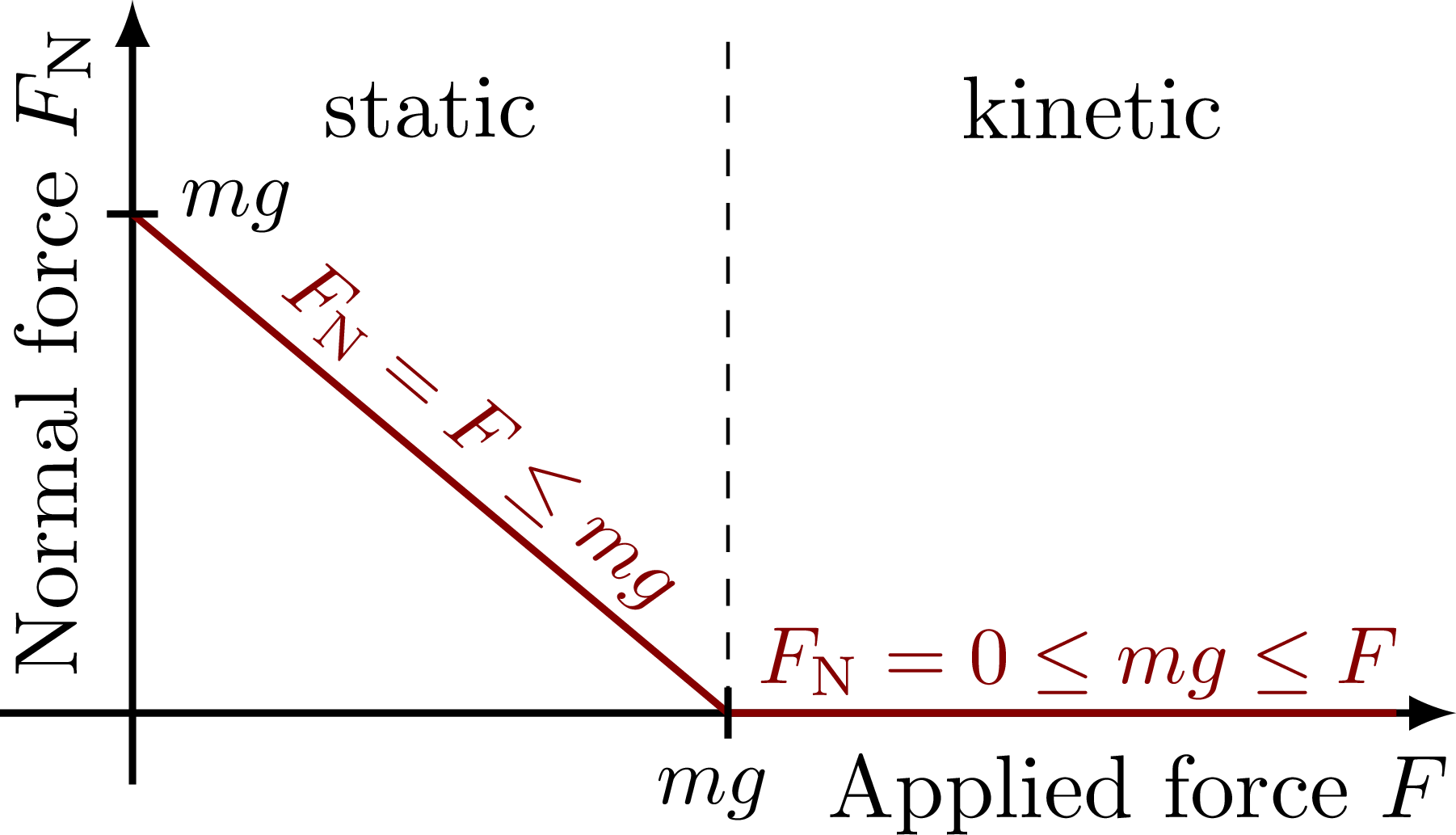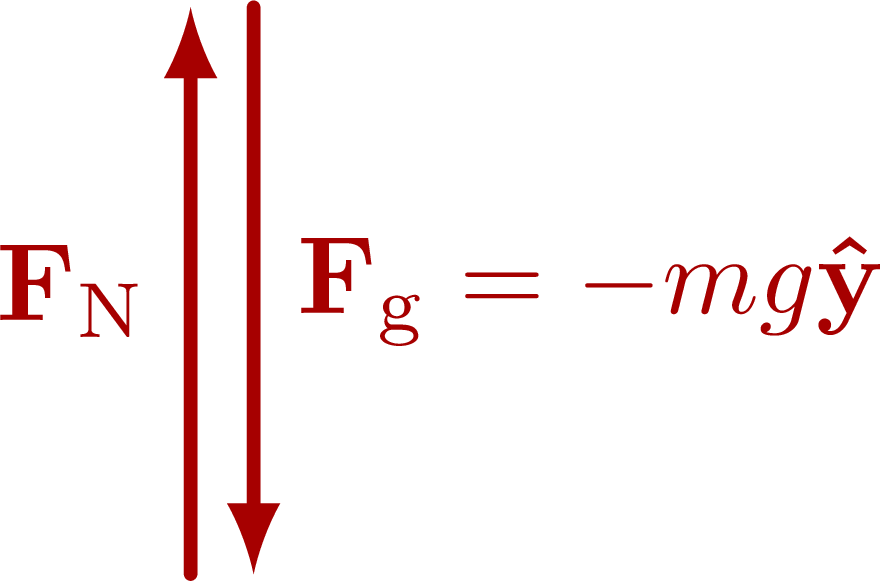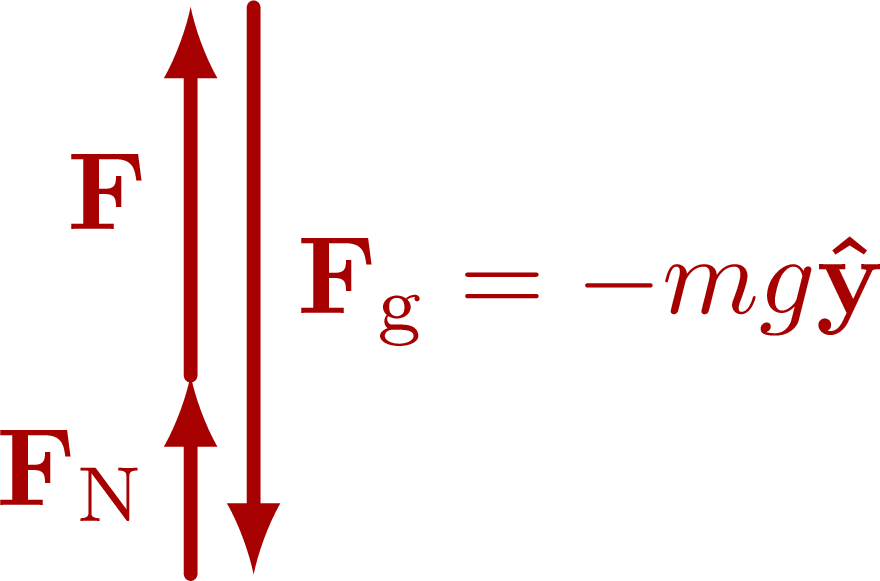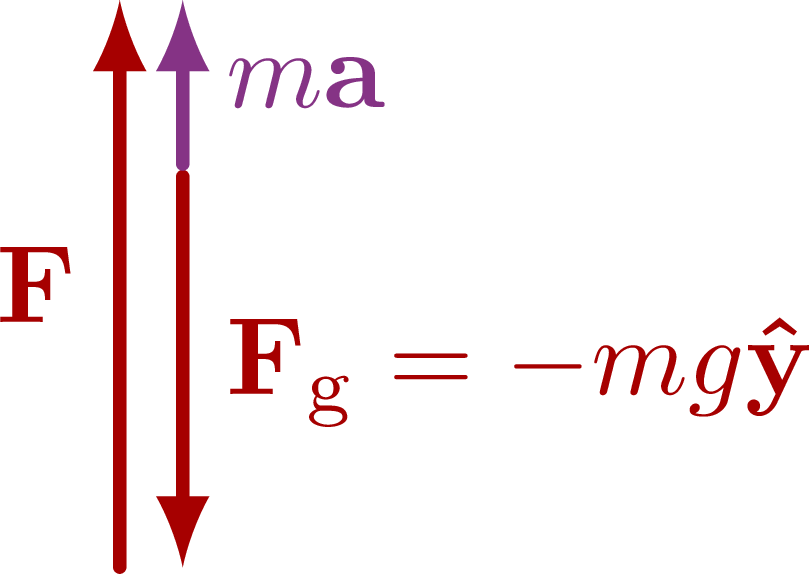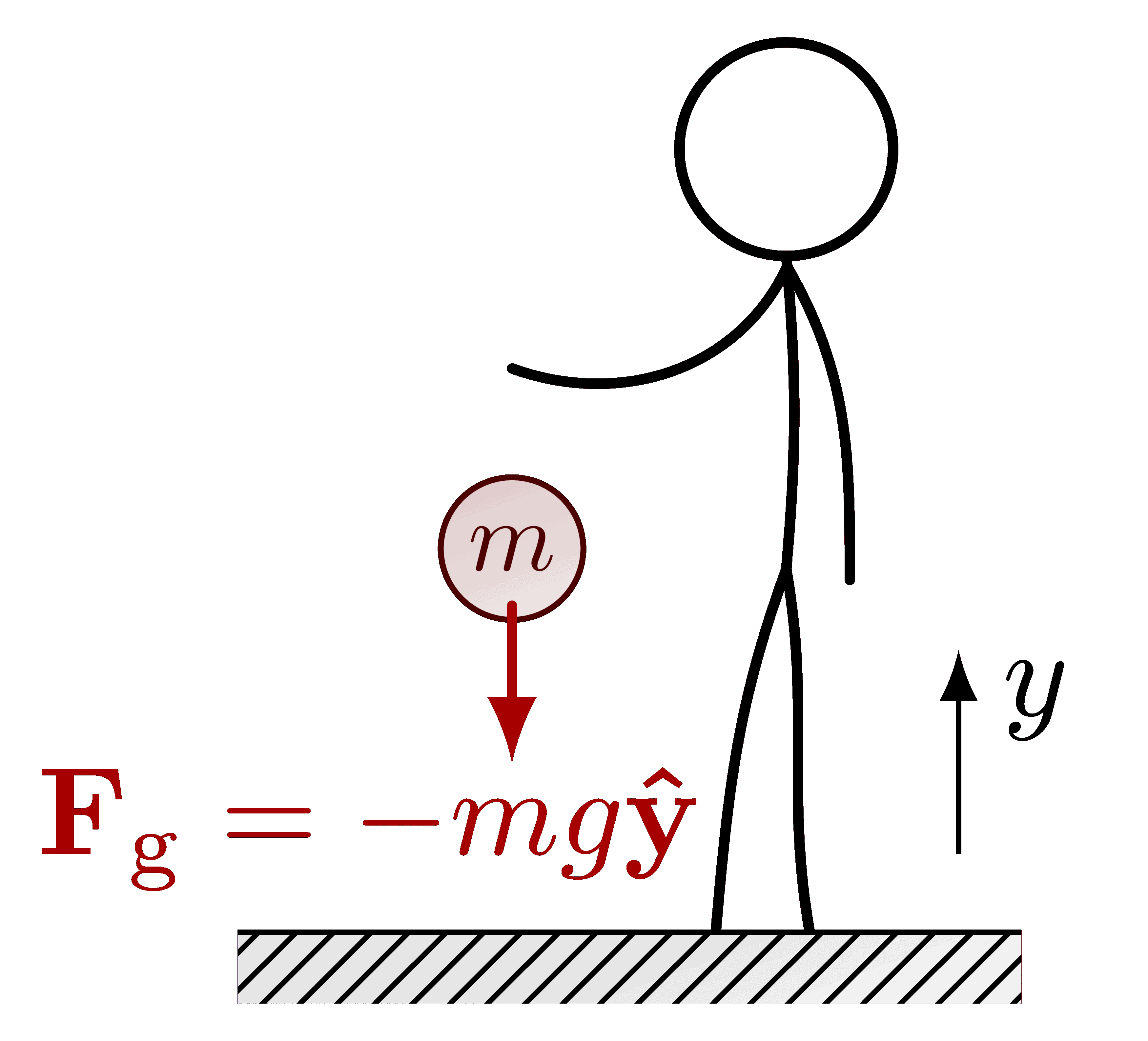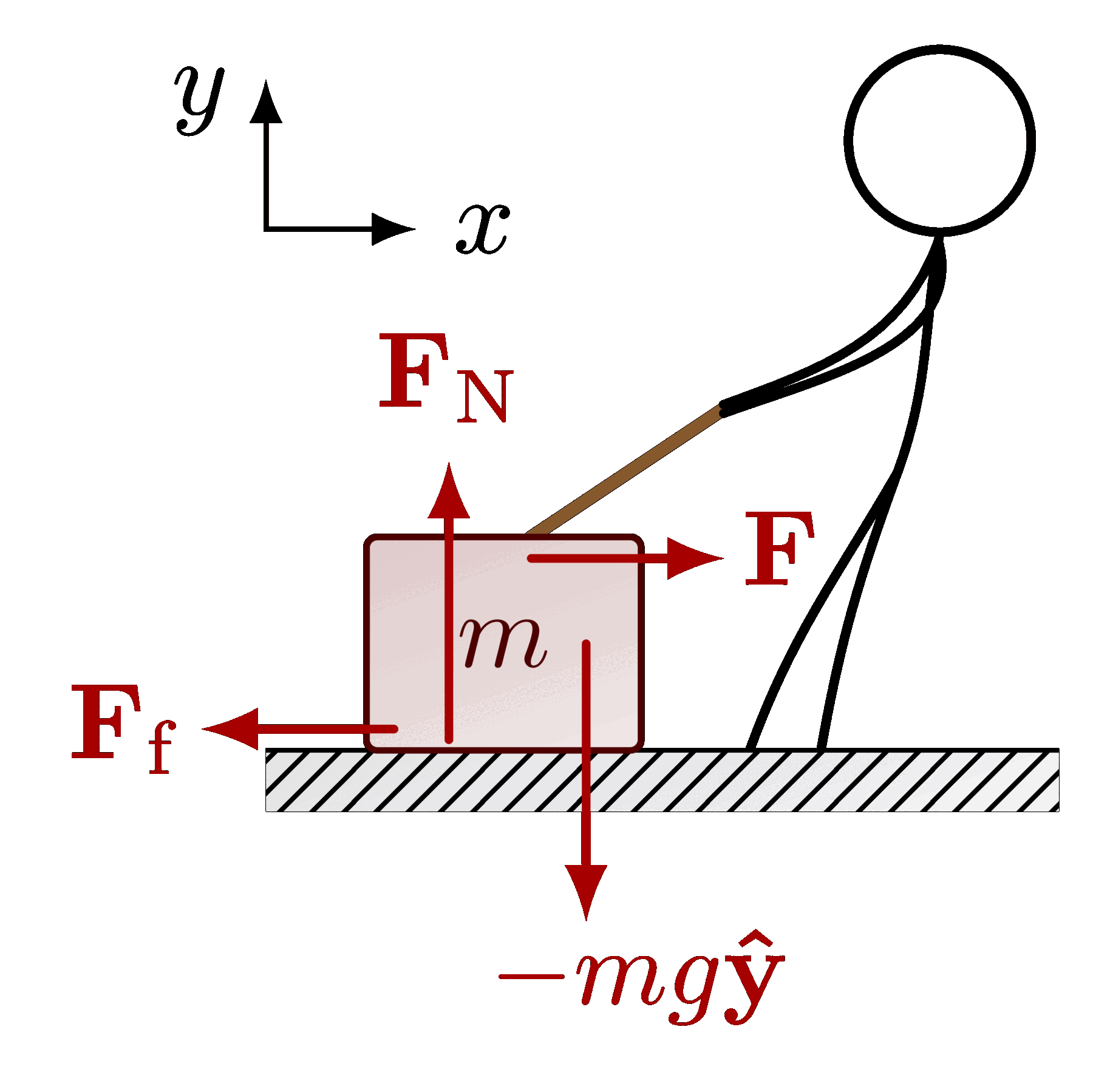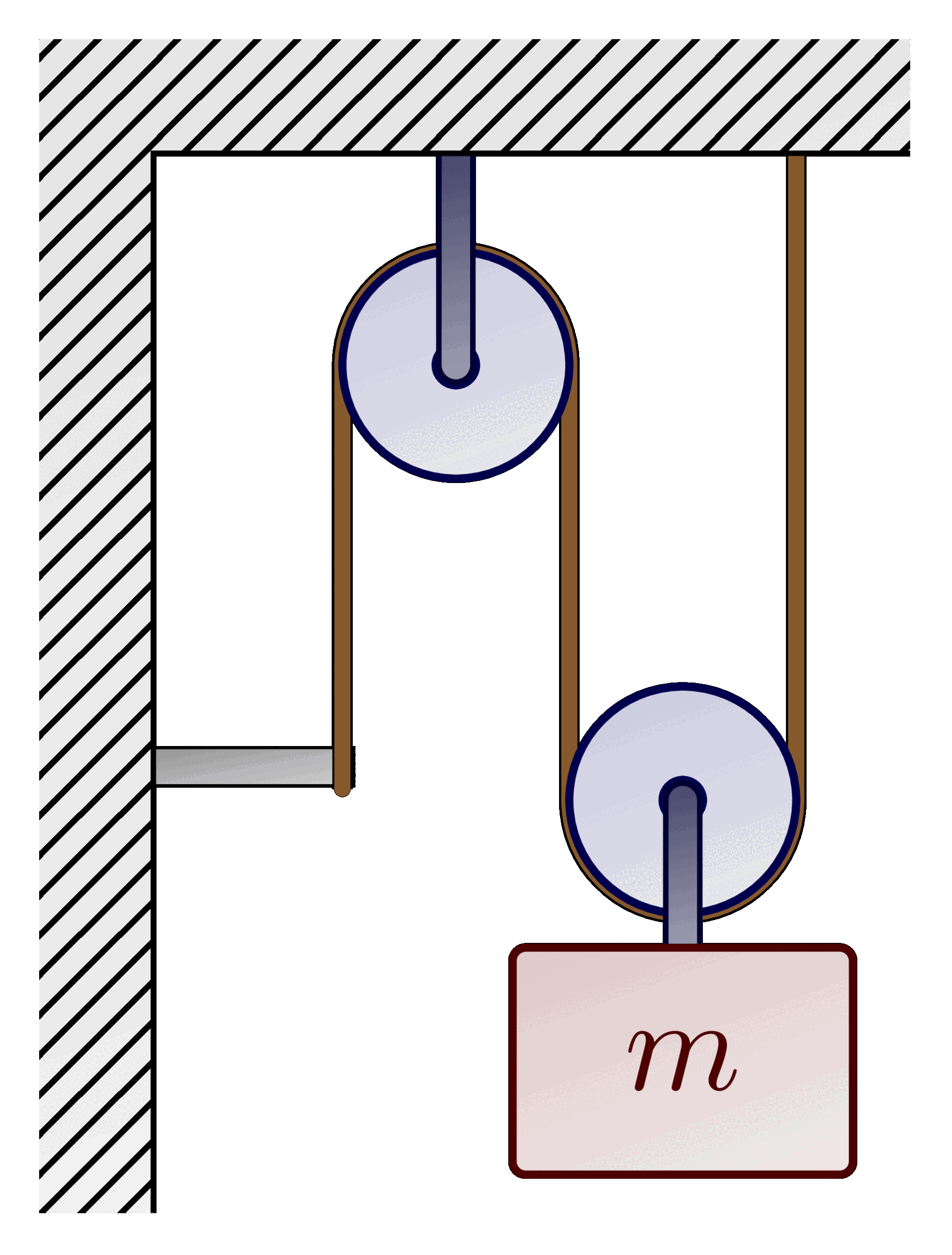Free body diagrams of the normal force of a mass standing on the ground.
For more related figures, please see the “forces” and “Newton’s laws” tag.
Edit and compile if you like:
% Author: Izaak Neutelings (September 2020)% Inspiration: https://tex.stackexchange.com/questions/25531/adding-underbrace-in-tikz\documentclass[border=3pt,tikz]{standalone}\usepackage{physics}\usepackage{ifthen}\usepackage{tikz}\usetikzlibrary{patterns}\tikzset{>=latex} % for LaTeX arrow head\colorlet{myred}{red!65!black}\colorlet{acol}{red!50!blue!80!black!80}\tikzstyle{ground}=[preaction={fill,top color=black!10,bottom color=black!5,shading angle=20},fill,pattern=north east lines,draw=none,minimum width=0.3,minimum height=0.6]\tikzstyle{mass}=[line width=0.6,red!30!black,fill=red!40!black!10,rounded corners=1,top color=red!40!black!20,bottom color=red!40!black!10,shading angle=20]\tikzstyle{rope}=[brown!70!black,line width=1.2,line cap=round] %very thick% FORCES SWITCH\tikzstyle{force}=[->,myred,thick,line cap=round]\newcommand{\vbF}{\vb{F}}\newboolean{showforces}\setboolean{showforces}{true}\begin{document}% HORIZONTAL ground\begin{tikzpicture}\def\W{2.0} % ground width\def\D{0.2} % ground depth\def\h{0.6} % mass height\def\w{0.8} % mass width\draw[ground] (-\W/2,0) rectangle++ (\W,-\D);\draw (-\W/2,0) --++ (\W,0);\draw[mass] (-\w/2,0) rectangle++ (\w,\h) node[midway] {$m$};\ifthenelse{\boolean{showforces}}{\draw[->] (1.0*\w,0.5*\h) --++ (0,0.9*\h) node[below=4,right=0] {$y$};\draw[force] (-0.3*\w,0.0*\h) --++ (0, 1.4*\h) node[left] {$\vbF_\mathrm{N}$};\draw[force] ( 0.3*\w,0.5*\h) --++ (0,-1.4*\h) node[right=5,below=-3] {$\vbF_\mathrm{g} = -mg\vu{y}$};%\draw[force] (0,0.9*\h) --++ (0, 1.0*\h) node[left] {$\vbF_\mathrm{N}$};
Click to download: dynamics_normal.tex • dynamics_normal.pdf
Open in Overleaf: dynamics_normal.tex


